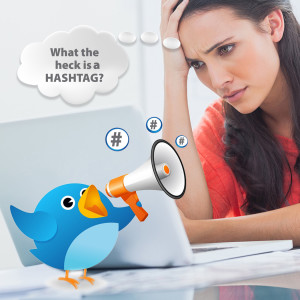How to Hashtag
Social media has reinvented the phone’s pound sign, giving birth to the now ubiquitous ‘hashtag.’ If you immediately understand what I’m referring to, you have one-up on my mother. Despite the barrage of TV ads referencing the hashtag and the fact that it’s been clickable since 2009, my mom has no idea what one is or what it’s used for, and she’s content to continue living in her hashtag ignorance.
Unlike my mother, there are those who would argue that they know exactly what a hashtag is and just how to use it. My Facebook newsfeed begs to differ.
Hashtags have become an integral part of tech culture as well as a valuable marketing tool, and are now used on most social networks including Instagram, Twitter, Facebook, Google+, Vine, Snapchat and Pinterest. But despite the omnipresence of the hashtag, frequent users could stand to learn some helpful tips and hashtag etiquette in order to make the most out of the tool.
Repeat Offender
One of my friends regularly abuses the hashtag. Sure, she’s only uploading photos of her kids and advertising her personal brand of parenting–she can add ten hashtags to a post if she wants to and #stringtogetheracollectionofwords that no one will ever search. She’s using her hashtags in the trendy way some do, to caption or offer commentary to the activities she’s posting. But if her intention was to make her content discoverable or to connect with others who shared her interests, she’d be misguided. She alone owns the rights to #letswashthatsleepingbagagain. (I checked.)
The hashtag is a digital tool that’s designed to help social media users connect and engage with one another based upon a common theme or interest. The method is straightforward: users choose a specific word or combination of words that closely reflect the theme or interest they want to share. The most successful hashtags are those which are relatively short and relevant. The goal is that like-minded people will find your post by using keywords shared by your hashtag in a simple search.
With Great Power Comes Great Responsibility
Individuals, businesses and advertisers can harness the power of the hashtag to build relationships and  boost brand awareness. The best brand hashtags represent the brand while avoiding mention of the brand name. Patagonia, an outdoor apparel company whose founding principles and mission emphasize environmental stewardship and social responsibility, coined #vivalosfunhogs. This hashtag allows outdoor enthusiasts to tag their photos and posts accordingly, affiliating themselves with the greater community of adventurers around the world who have used the same tag and, assumedly, share similar values and interests. The brand itself may be an afterthought, but with #vivalosfunhogs, all digital roads lead back to Patagonia. It’s a savvy use of the hashtag, as users may not feel they’re shilling for a brand but instead, participating in the sharing culture of social media. Another caveat is that Patagonia created a unique hashtag, which means it won’t get pushed out of view with newer mentions. More generic hashtags may trend for a time, but will ultimately get lost in the popular crowd.
boost brand awareness. The best brand hashtags represent the brand while avoiding mention of the brand name. Patagonia, an outdoor apparel company whose founding principles and mission emphasize environmental stewardship and social responsibility, coined #vivalosfunhogs. This hashtag allows outdoor enthusiasts to tag their photos and posts accordingly, affiliating themselves with the greater community of adventurers around the world who have used the same tag and, assumedly, share similar values and interests. The brand itself may be an afterthought, but with #vivalosfunhogs, all digital roads lead back to Patagonia. It’s a savvy use of the hashtag, as users may not feel they’re shilling for a brand but instead, participating in the sharing culture of social media. Another caveat is that Patagonia created a unique hashtag, which means it won’t get pushed out of view with newer mentions. More generic hashtags may trend for a time, but will ultimately get lost in the popular crowd.
Hashtag Chill
One gaffe that both individuals and social media users make is using too many hashtags. In fact, not every post or tweet warrants a hashtag, and certainly no single post warrants five hashtags or more. The tried and true adage of “Less is More” is appropriate here. Hashtag overuse distracts from your message and, worse, comes off as desperate or plain old silly. Look no further than Jimmy Fallon and Justin Timberlake’s #Hashtag sketch for an on-point send up of a trend taken too far.
Heather Candon is a writer living in New York.

